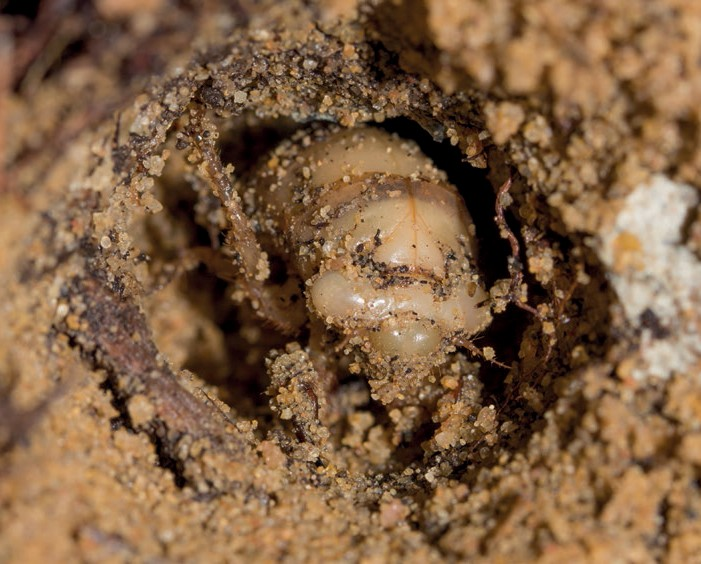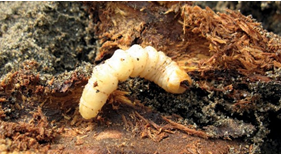Macrofauna – Soil Insect Larvae
The vast majority of insects, up to 95%, are linked to the soil during their life cycle. Some lay eggs in the soil or use it as a substrate for overwintering. Due to very specific features of the soil as a habitat, insect larvae have made numerous adaptations to live in this particular environment. According to their life cycle, insects can be classified depending on whether they undergo complete, incomplete or no metamorphosis. Larvae of hemimetabolous insects do not undergo substantial changes in their body form; they are often called nymphs and look very similar to adult insects lacking well developed wings and the ability to reproduce. The holometabolous larvae differ greatly from the adult and often occupy different ecological niches. The change to adulthood occurs during pupation. Morphologically, holometabolous insects are very diverse and cover a wide range of trophic levels, from detritivores to herbivores and predators.

Hemiptera Larvae
Cicada nymphs (Hemiptera) may be among the most well-known, most likely due to their long life in the soil and huge biomass. They feed by sucking sap from roots and can live in the soil for up to 17 years. Emergence of over 300 nymphs of periodical cicadas per square metre represents the highest recorded biomass (up to 4 000 kilos per hectare) for any terrestrial animal.
Diptera Larvae
In general look like small worms as they are all legless. However, their ecological functions are very diverse. Some of them mine taproots and feed on the internal cortex. Others live in litter or dung, which they decompose.
Lepidoptera Larvae
Show diverse feeding strategies. The majority feed on green plants. Ghost-moth larvae in Tibet dig soil and feed on live roots. They are often infected by a caterpillar fungus valued in herbal medicine. Some others live in ant colonies, and are fed mouth-to-mouth by ants, or feed on residuals of ant food.
Coleoptera Larvae
Are represented by 100s of families with different feeding habits. Some longhorn beetle larvae bore into roots or rhizomes. scarabaeid larvae are parasitised by Hymenoptera. Tiger beetle larvae live in cylindrical burrows, and wait for their prey to pass by on the soil surface.
Neuroptera Larvae
Most are predators, with elongated mandibles. By using the mandibles, they catch and pierce prey, and inject digestive juices. Ant lions create pitfall traps, and eat small arthropods that fall in. The defining feature of beetles is the hardened forewings that cover their body. Their colours are variable, although most soil-dwelling beetle species are brown or black. Their body shape is also variable: some have long horns or sharp tusks, some can curl up like myriapods, some are flat and some are slim. A number of soil beetles are wingless.
Ref: A Global Atlas of Soil Biodiversity p 60

